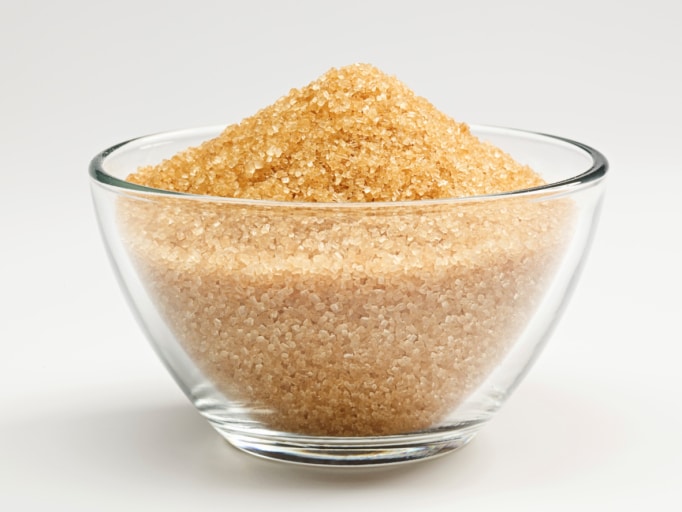An Extensive Overview to the Ecological Effect and Sustainability Practices in Walking Stick Sugar Processing
The ecological influence of cane sugar handling provides a complicated selection of obstacles that warrant mindful evaluation. From soil destruction and excessive water usage to the carbon footprint related to farming and production, the consequences of typical practices are significant. On the other hand, the adoption of cutting-edge sustainability measures provides a pathway towards extra accountable production methods. Understanding the interaction between these problems is vital for stakeholders in the market. What certain practices can be executed to strike a balance in between productivity and ecological stewardship? The answers hinge on a closer consider both the obstacles and potential options.
Review of Cane Sugar Processing
Walking cane sugar handling entails a series of organized actions that transform sugarcane into polished sugar. Initially, collected sugarcane is transported to processing centers, where it undergoes cleaning up to get rid of dirt and debris. Following this, the walking stick is squashed to draw out juice, which is then clarified by getting rid of impurities with home heating and the addition of lime.
The made clear juice undertakes evaporation, where water is removed to concentrate the sugar web content. These crystals are divided from the continuing to be syrup using centrifugation, resulting in raw sugar.
The end product is after that dried and packaged for distribution. Throughout this whole process, preserving performance and quality control is necessary to make sure the sugar satisfies sector criteria. Each action in cane sugar processing not only adds to the end product but also has ramifications for resource use and waste generation, establishing the phase for conversations on sustainability and ecological effects related to sugar production.
Environmental Difficulties of Production
The production of cane sugar presents several significant environmental obstacles that warrant focus. One key worry is the considerable use agrochemicals, consisting of chemicals and plant foods, which can result in soil deterioration, biodiversity loss, and contamination of regional water sources. The runoff from sugarcane areas often carries these chemicals into neighboring ecosystems, disrupting marine life and impacting the health and wellness of communities reliant on these water bodies.
An additional difficulty is the high energy intake connected with sugarcane processing. The boiling and refining phases need substantial heat, mostly produced by melting fossil gas, contributing to greenhouse gas emissions. Additionally, the extensive land area needed for sugarcane farming can cause deforestation and environment destruction, more aggravating environment change and harmful wildlife.
In addition, the labor methods in some areas increase moral worries, as workers may face bad working problems and insufficient incomes. This circumstance often bolsters a cycle of poverty in neighborhood neighborhoods. Cane Sugar Processing. Resolving these environmental difficulties is crucial for creating more lasting techniques in walking stick sugar manufacturing, ultimately profiting both the setting and the neighborhoods entailed in this market
Water and Land Usage Impact
Water resources and land use are critical elements in the walking cane sugar industry that significantly affect the setting. The cultivation of sugarcane needs significant water input, with estimates suggesting that it can take in approximately 2,000 litres of water per kilogram of sugar created. This extensive use water often brings about depletion of local water sources, affecting not only the sugarcane vineyards yet additionally bordering environments and communities that rely upon the very same water resources for agriculture and domestic use.

Moreover, land usage for sugarcane growing can bring about deforestation and the conversion of all-natural habitats into monoculture haciendas. This method lessens biodiversity, disrupts regional communities, and adds to dirt degradation. The growth of sugarcane areas frequently elbows in on important farming land, developing competition for resources in between food and biofuel production.
Sustainable methods, such as maximizing irrigation methods and applying crop rotation, are crucial to reduce these effects. By taking on more efficient water use and land administration approaches, the walking stick sugar sector can minimize its ecological impact, ensuring an equilibrium between farming efficiency and ecological conservation.
Greenhouse Gas Emissions
Greenhouse gas exhausts stand for a substantial ecological problem within the cane sugar processing market, particularly as farming practices expand to satisfy global need. The farming of sugarcane, a crop that flourishes in exotic environments, relies heavily on synthetic plant foods and chemicals, which add to laughing gas exhausts. Additionally, land-use changes, including logging for brand-new sugarcane vineyards, release co2 stored in vegetation and dirt.
During processing, energy intake is one more significant resource of greenhouse gas exhausts - Cane Sugar Processing. Many sugar mills make use of nonrenewable fuel sources to power equipment and generate heat, causing significant carbon impacts. Furthermore, the transport of raw sugarcane and completed items includes layers of discharges via gas combustion in lorries
The cumulative effect of these emissions worsens environment adjustment, posing threats not only to the setting but additionally to the long-term viability of the sector. Stakeholders must acknowledge the urgent demand for comprehensive approaches that address these discharges. This involves evaluating present farming practices, processing approaches, and transportation systems to determine areas for improvement and reduction. Addressing greenhouse gas news exhausts is essential for cultivating a much more sustainable cane sugar sector in an altering environment.

Lasting Practices and Innovations
Lasting methods and developments are increasingly important in the walking cane sugar processing industry as stakeholders look for to reduce environmental impacts while keeping performance. One considerable innovation is the execution of integrated plant monitoring, which maximizes resource usage by integrating dirt monitoring, insect control, and crop turning methods. This method enhances yield while reducing chemical inputs and preserving Source soil wellness.
In addition, the adoption of sustainable energy sources, such as biomass from sugarcane deposits, has gotten grip - Cane Sugar Processing. By converting waste products into power, processing centers can lower their reliance on fossil fuels, therefore reducing greenhouse gas discharges
Water administration methods have actually additionally seen enhancements with the recycling and reusing of water in processing plants, substantially decreasing freshwater usage. Advancements in technology, such as accuracy agriculture, make it possible for farmers to check crop health and source use much more successfully, guaranteeing lasting cultivation techniques.
Furthermore, qualification programs like Fair Trade and Rain forest Alliance encourage eco responsible farming practices and promote social equity within the supply chain. By accepting these sustainable methods and developments, the cane sugar handling industry can enhance its durability and add favorably to ecological stewardship.
Verdict
The ecological impact of walking cane sugar handling offers significant challenges, consisting of dirt degradation, high water usage, and greenhouse gas emissions, along with ethical problems associated with labor techniques. Dealing with these concerns with lasting techniques, such as incorporated crop monitoring, renewable power fostering, and water recycling, check out this site is necessary. By promoting ecologically responsible and socially equitable techniques in sugar production, the market can alleviate its unfavorable effects, making certain an extra lasting future for both communities and environments entailed in this market.
Walking stick sugar processing involves a collection of organized steps that transform sugarcane right into polished sugar. Each step in walking cane sugar processing not only contributes to the final product however additionally has ramifications for resource use and waste generation, setting the stage for discussions on sustainability and ecological influences associated with sugar production.
Greenhouse gas exhausts represent a substantial environmental worry within the walking stick sugar processing market, particularly as agricultural practices expand to fulfill international need.Lasting techniques and technologies are significantly crucial in the walking cane sugar handling market as stakeholders seek to decrease ecological impacts while preserving productivity.The environmental effect of walking cane sugar processing provides significant obstacles, consisting of dirt deterioration, high water consumption, and greenhouse gas emissions, alongside honest problems related to labor methods.
Comments on “Recognizing Cane Sugar Processing: A Comprehensive Introduction of the Stages”